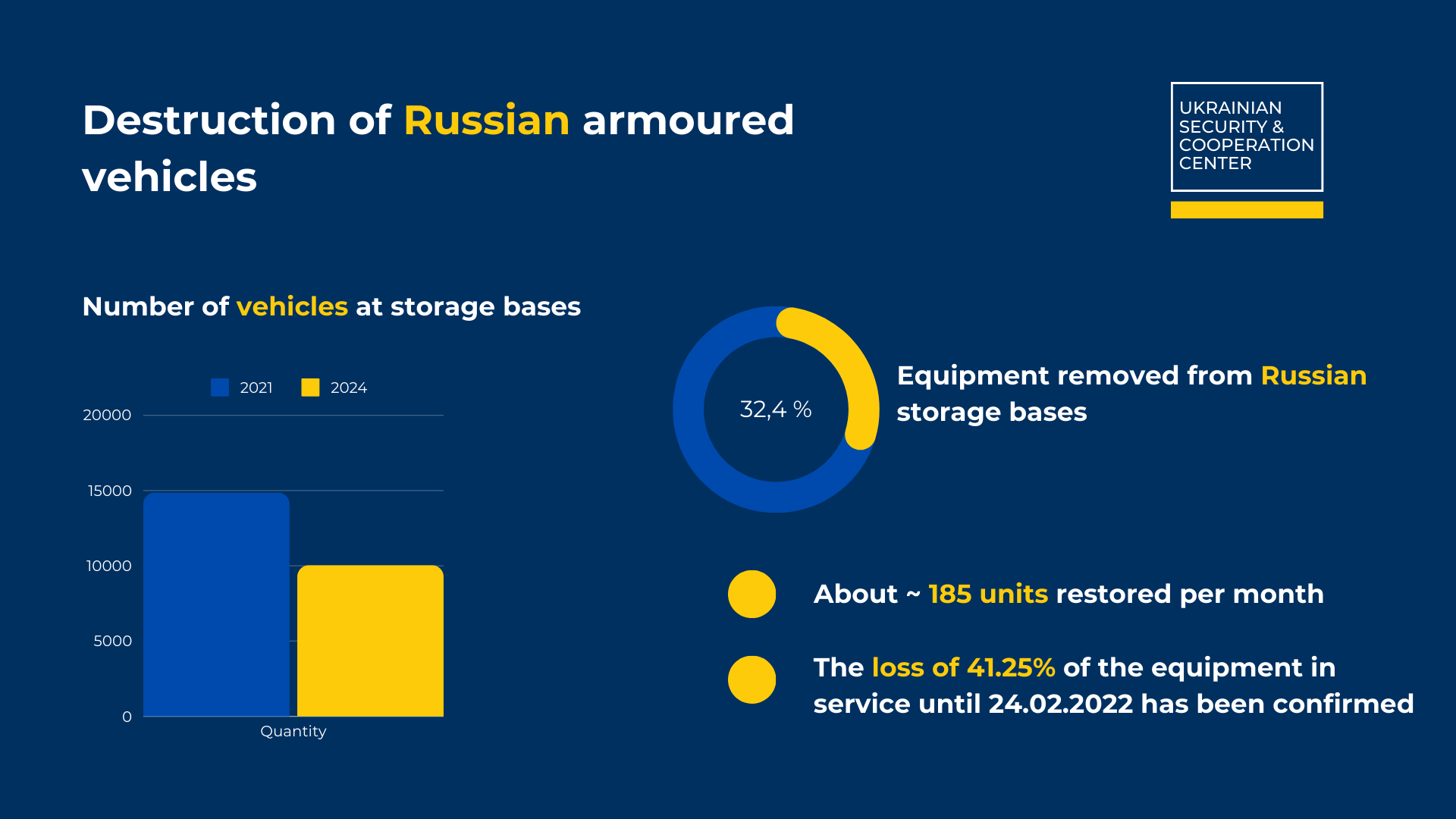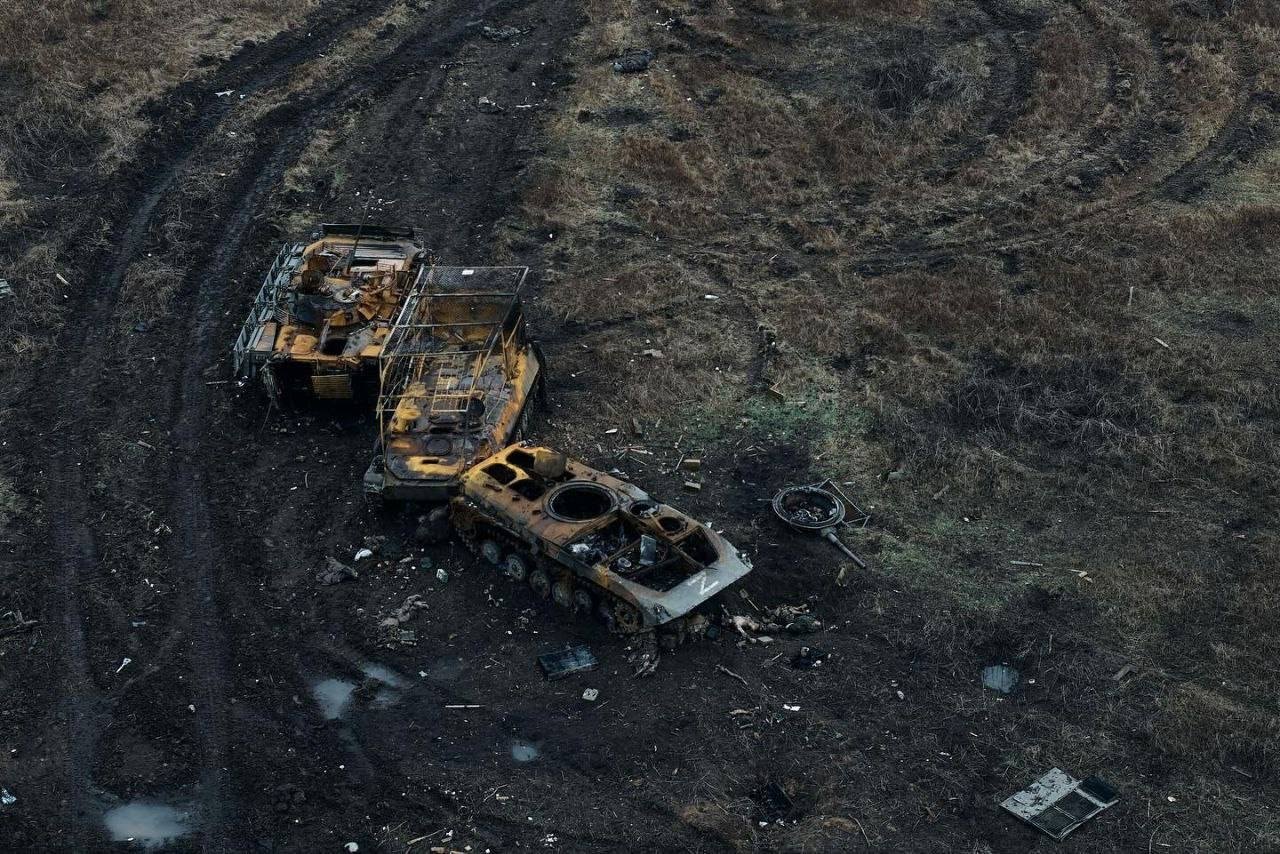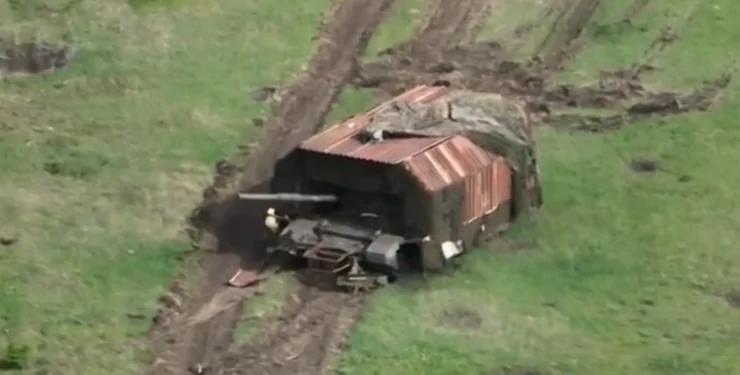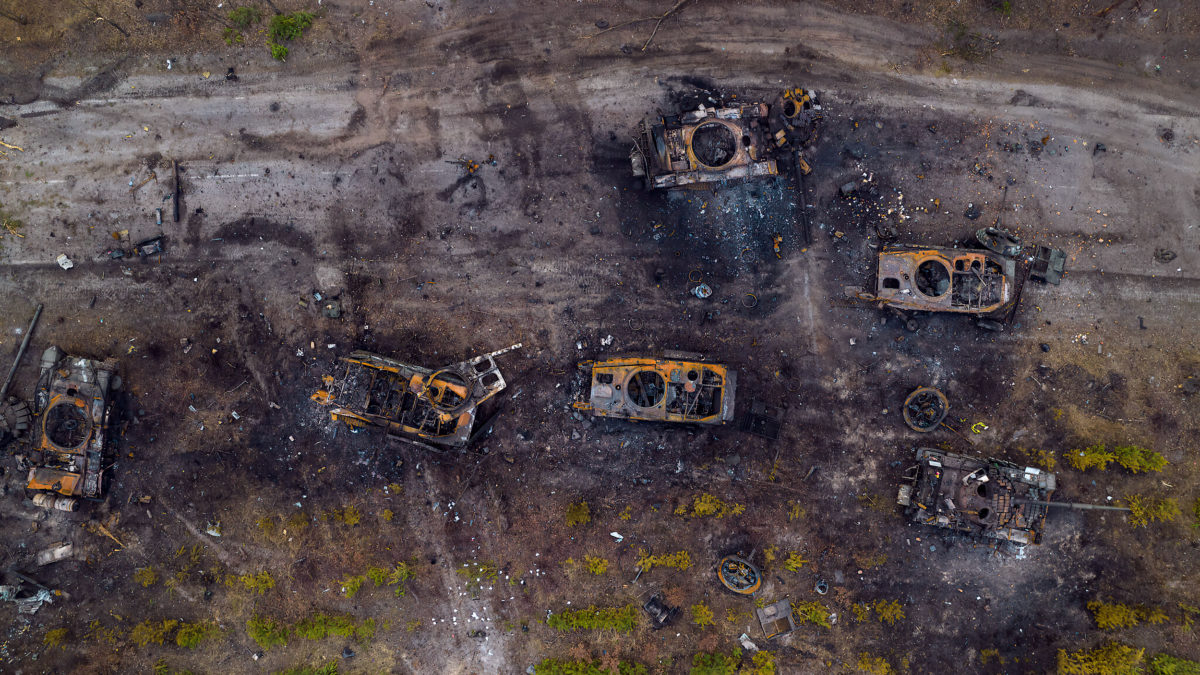Since the beginning of the full-scale invasion, Russia has suffered heavy losses in both personnel and military mechanised equipment. Thousands of Russian tanks and armoured personnel carriers have been “utilised” over the two years of the war, and these statistics are constantly growing. For the enemy, they often become unrecoverable, and as a result, he has more and more units equipped with light unarmoured vehicles and motorcycles. In particular, for the first time in the Russian army, a “turtle tank” appeared as a phenomenon – a tank welded with metal plates to protect the troops.
According to the Oryx project, as of May 1, 2024, according to confirmed data alone, Russia has lost 1969 armoured personnel carriers (APC) and armoured fighting vehicles (AFV) destroyed, abandoned or captured. Among them are Soviet MT-LBs and BRMs, modern Russian Terminator armoured personnel carriers and BTR-80/82, etc.
The situation with losses among infantry fighting vehicles (IFVs) is even worse. According to the above-mentioned Oryx project, since the beginning of the war in Russia, the Ukrainian Defence Forces have “cancelled” 3,886 units of such equipment. Of these, 2,805 were destroyed.
For example, in the battles for Avdiivka in one section of the frontline alone from October 2023 to February 2024, the Russian army lost 404 armoured combat vehicles (armoured personnel carriers and infantry fighting vehicles) that were destroyed, abandoned or captured on the battlefield.

Infographics: Destruction of Russian armoured vehicles
Such losses could not but affect the Russian army’s supply of combat vehicles. The annual report of the IISS analytical centre states that as of 2022, Russia had 14193 armoured personnel carriers and infantry fighting vehicles in service. As of May 1, 2024, the percentage of losses of the number with which Russia entered the war with Ukraine, according to the verified losses of the Oryx project, is 41.25%. In turn, if we take into account the data of losses reported by the General Staff of the Armed Forces of Ukraine, this figure is 14067 units or 99.11%.
No other European army could have suffered such losses in armoured vehicles simply because it did not have such a large number in service. No European defence industry could compensate for such losses by producing new vehicles in the short and medium term. Nor is the Russian military-industrial complex capable of doing so.
Losses and recovery
In order to compensate for what it lost on the battlefield, the Kremlin has resorted to restoring and replacing destroyed equipment, taking it from the large stockpiles of preserved military weapons that Russia received after the collapse of the Soviet Union. According to the open source intelligence that used satellite imagery to list Russian storage bases and equipment, Russia had about 14865 armoured combat vehicles in storage before the full-scale invasion.
As of May 2024, researchers estimate that 10043 units of armoured vehicles of various types remained at Russian storage bases. This means that over almost two and a half years of hostilities, the Russians have withdrawn at least 4,813 units, or 32.4% of their equipment, from storage facilities, but the actual figure is currently much higher. The result is that on average, Russia restores about 185 armoured vehicles per month and produces a certain amount more.
Such volumes of restoration, even with additional production of equipment, are not enough to quantitatively cover the monthly losses in the war. According to the confirmed losses by the Oryx project alone, the Russian army loses an average of 180 armoured vehicles per month. In this case, it is safe to assume that the actual Russian losses are much higher.

Destroyed Russian military equipment. Photo: Military Balance
“Turtle tank” is a litmus test
In view of this, the reduction in the number of armoured vehicles at the front is becoming more noticeable. Obviously, the Russian command has to concentrate its main weapons and equipment in certain priority areas in order to attempt to break through the front. As a result, there may be a shortage of armoured vehicles in other “secondary” areas. Thus, in certain areas, the Russian army has an imbalance in the availability and use of equipment.
For example, enemy attacks without the support of armoured vehicles are becoming more frequent on the contact line. Recently, the Ukrainian army has recorded an increase in the number of assault operations by enemy units on motorcycles, buggies and golf carts or unarmoured Ural trucks, which are welded with metal nets against FPV drones. In particular, they are used in the southern direction near the village of Robotyne. At the same time, the enemy continues its mechanised strikes in the area of Avdiivka, the main area of attack, losing dozens of BMPs and APCs daily.
A phenomenon that can characterise the shortage of armoured combat vehicles and airborne assault vehicles and serve as a kind of litmus test is the emergence of the “turtle tank” in the Russian army. Its feature is the “strengthening of protection” of the equipment by additional welding of metal sheets in the form of a shell. The first instance of such a vehicle was spotted during the assault on the village of Krasnohorivka in Donetsk region. Afterwards, its storage site was hit by Ukrainian artillery and the tank itself was destroyed. Further, other similar “developments” were spotted at the front.
An interesting fact is that the use of this type of “armour” is necessary to protect not the vehicle itself, but the airborne placed on top of the vehicle from shrapnel and kamikaze drones. Therefore, instead of using armoured personnel carriers and infantry fighting vehicles, which emerged as a class of equipment whose main task is to deliver and land personnel on the battlefield, Russian units have to use tanks to transport troops. Thus, instead of being protected by armour, the troops themselves become the protection for the tank. This is a kind of Russian know-how for replacing lost equipment.

A Russian turtle tank. Photo from social media
It can be predicted that with such losses in armoured combat vehicles, Russia may soon exhaust its stocks from the Soviet era. If the Ukrainian Armed Forces continue to destroy Russian equipment at this rate, it is likely that in 1.5 to 2 years some Russian models of BMPs and APCs will become rare on the battlefield. Losses in equipment may affect the Kremlin’s planning for further military operations.
For example, Russian troops tried to surround Kharkiv for the first time in 2022, when they involved about 11-13,000 people, who were career military personnel, well equipped with weapons and equipment. Currently, the composition and size of the Russian army has changed, a significant number of professional military personnel have been replaced by mobilised resources due to losses, and military equipment is becoming of poorer quality. In this case, any attempts at repeated attacks on Kyiv or Kharkiv, which Russian propaganda fears, will remain only in the imagination of those who voice these plans.
Ukraine is systematically reducing Russian military capabilities that Moscow could use against other European countries. It is in the interests of Ukraine’s partners to provide military and financial weapons so that Ukraine can continue to weaken the aggressor on the battlefield, reducing the chances of an “escalation of the war” on the continent.
*An APC or armoured combat vehicle is a wheeled or tracked all-terrain vehicle designed to transport infantry from mechanised (motorised infantry, motorised rifle, etc.) units on the battlefield, to fight from the vehicle and to provide fire support during and after the rush.
BMP or infantry fighting vehicle – an armoured tracked or wheeled, usually floating, combat vehicle designed to transport and provide direct fire support to motorised infantry units; one of the classes of armoured fighting vehicles. The main difference between an infantry fighting vehicle and an armoured personnel carrier is the power of its standard armament. The infantry fighting vehicle has greater firepower for modern combined arms combat.
The article was published in The Moscow Times

